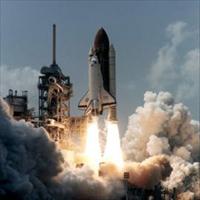Shuttle Atlantis departs ISS as Endeavour rolls out for next launch

Shuttle Atlantis departs ISS as Endeavour rolls out for next launch
Space Shuttle Atlantis today undocked from the International Space Station, beginning its return to Earth. The Shuttle, which had been visiting the station for mission STS-122, delivering the Columbus laboratory to the orbital outpost. Undocking occurred at 09:24 GMT, after connecting hatches between the spacecraft were closed at 18:03 GMT yesterday evening.
Atlantis is scheduled to land on Wednesday. While NASA hope that it can land at the Kennedy Space Center's Shuttle Landing Facility (SLF), they are prepared to use their backup site at Edwards Air Force Base, should the conditions at the SLF be unacceptable for landing. The backup site is not usually considered for the first landing attempt, but is being considered an option for STS-122 because of the US Navy's intention to destroy a failed spy satellite in orbit. This is expected to create debris, which could potentially damage spacecraft passing through the orbit that the spy satellite is in, such as a re-entering Shuttle.
During STS-122, the Columbus module was added to the ISS, and a nitrogen coolant tank was replaced. Atlantis also collected a failed control gyroscope from the station, which had been replaced during the earlier STS-118 mission. A crew rotation also occurred, with French astronaut Léopold Eyharts replacing American Daniel M. Tani as a member of the Station's Expedition 16 crew.
Meanwhile, Endeavour, which is scheduled to fly the next Shuttle Mission, has been moved to the launch pad. The fully-stacked Shuttle and Mobile Launch Platform rolled out of the Kennedy Space Center's Vehicle Assembly Building at 04:26 GMT, and is made its way down the Crawlerway, arriving at Launch Complex 39A at about 09:45 GMT, and had been secured in place by 11:22. The US Air Force Thunderbirds display team performed a flyby of the Shuttle at 15:15 GMT. Endeavour is scheduled to begin the STS-123 mission in early-mid March, with a component for the Japanese Experiment Module, and the Canadian Dextre component for the Space Station's robotic arm.
 Back and Next - Back and Next
Back and Next - Back and Next See Also - See Also
See Also - See Also